Writing a children’s book can seem like an overwhelming task, but the rewards are immense. Not only will you be able to share your creativity with young readers around the world, but you’ll also have the opportunity to create a wonderful story that will be cherished for generations.
Through your work, you can bring joy and excitement to children all around the world, while also earning yourself some financial reward. With the help of modern publishing technology such as Amazon KDP, it’s easier than ever to get your children’s book on shelves around the world.
Creating a memorable story for young readers isn’t always easy, but several tips can help you craft an engaging narrative. Such as keeping your language simple so children can easily understand it, and making sure to include plenty of colourful descriptions and vivid details so readers can easily picture each scene.
When it comes to how much money you can earn from writing children’s books, how much you make will depend on how well your book does. Factors like how many copies are sold and how successful marketing campaigns are will have an impact on how much money you make from your book. However, if you manage to create a popular title that sells well, then you could potentially be looking at significant profits from royalties or other sources.
With this guide, you’ll learn how to write a children’s book that is both memorable and enjoyable for all ages. From crafting characters and wonderful storylines to finding a children’s book illustrator or publisher, we’ll cover all of the steps necessary for creating a captivating tale your readers won’t soon forget!
Complete Guide to Writing a Children’s Book
Before attempting to earn money from creating children’s books, it is essential that you create high-quality content with characters, settings, and wonderful storylines that are both engaging and relatable to your audience.
To do this, you should strive to create vivid descriptions of your characters and settings that allow a child reader to see the world you have created in their minds. Additionally, strive to make sure the language used in your text is suitable for young readers.
Focus on crafting stories that resonate with a wide age range and backgrounds so that all readers can connect with the characters and plot points.
It is also important to ensure that each story contains elements of excitement and adventure as well as an educational value such as lessons about how to be kind or how to navigate through challenges.
Step 1: Understand your audience

When it comes to how to write a children’s book, understanding your audience and your child’s reading level is the most important step. Knowing who your audience is can make or break your book, as it allows you to use age-appropriate language and content that is appropriate for the target age group you’re targeting. It also enables you to decide on the type of children’s book that will be best suited for them.
You must take the time to research their intended readership to create a book that keeps the kids engaged. This means delving into demographic information such as age, gender, socio-economic status and geographical location, as well as cultural norms and preferences.
It also includes studying how kids learn and how language impacts them. This kind of research will help you to create the main character their readers can relate to and storylines they can engage with much easier.
A good tip when you want to write children’s books is to know how long it should be so that it holds their attention without being too overwhelming or too boring.
Keep in mind the age group of your target audience when deciding how many pages or how much text your story should have—younger kids may not have the patience for longer children’s books with more complicated storylines while older kids may find shorter stories too simple and unengaging.
Here are the 5 different categories that children’s books fall under:
Board books
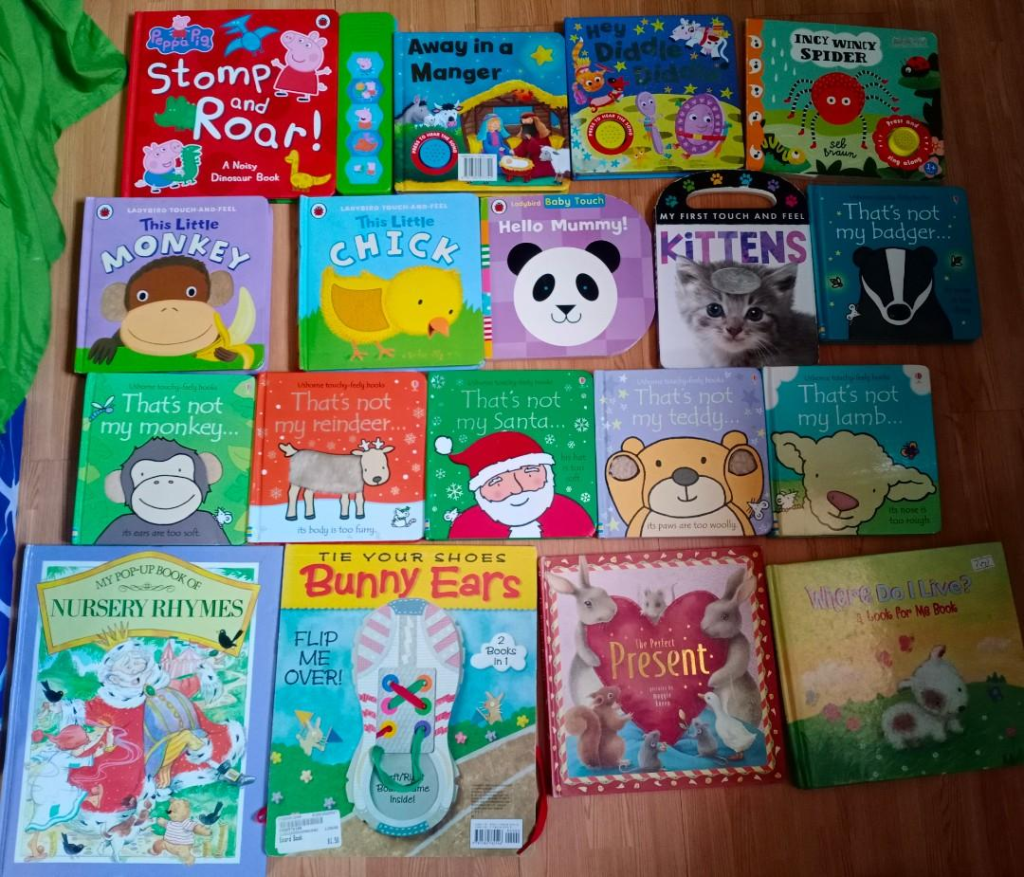
A board book is a special type of book for young readers. They should be the first children’s book a parent should purchase as they are specifically designed for children aged 0-3 and have hardback covers, as well as pages made from the same material. Due to their sturdy design, board books can withstand the wear and tear that comes with regular use by young children.
In addition to being tough and durable, board books contain lots of illustrations with small phrases printed on each page. This allows children to start building a reading habit at an early age while also developing visual recognition skills. Reading these kinds of books helps children learn how to identify words, how to read them in order, how to recognize syllables, how to pronounce them correctly, and how to connect them together into meaningful stories.
If you’re interested in writing your own board book for little ones, you’ll need to be prepared for the challenge! You’ll need to think up a story that’s both entertaining and educational for toddlers, create illustrations that grab their attention, write short sentences that capture their imagination and provide guidance on how best to pace the story so it’s engaging throughout.
With some practice and patience, you just might be able to create a masterpiece!
Picture books

A picture book is a type of children’s book specifically designed for children, usually aged 3-5. With their vibrant illustrations and images, they provide an engaging way to introduce young readers to the world of literature. For older children, picture books can help foster a love of reading, as well as enhance their critical thinking skills by allowing them to explore the meanings behind the pictures.
The illustrations in picture books play a particularly important role. They act as visual cues that create meaning and understanding for children, helping them to understand how stories work and how characters feel and interact.
Additionally, due to their vivid nature, picture book illustrations can spark a child’s imagination and encourage creative thinking. Furthermore, they can serve as tools for strengthening observation skills by teaching children how to observe details in the pictures that might otherwise go unnoticed.
If you want to start publishing children’s books, you should keep in mind how best to use illustrations to create an engaging story that is both educational and entertaining. The illustrations should be unique and distinct from each other so that each page brings something new for readers to discover.
Additionally, you must decide how to use words effectively alongside the illustrations; although picture books do not contain many words, these words need to be carefully chosen so they complement one another without either overshadowing the other.
Picture books have a word count that ranges between 200-400 words and contain illustrations on each page.
Early reader books
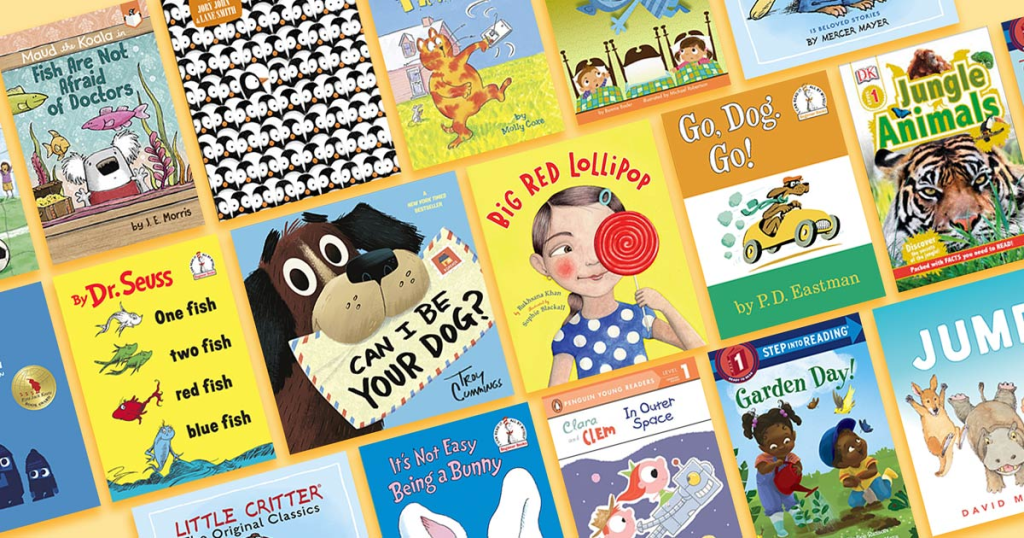
Early reader books are an important step in a child’s reading journey and are designed to encourage early readers, aged 5-9 years old to transition from listening to adult-read stories, to actually reading them.
These types of children’s books provide exciting and engaging stories with simple plots and limited pages, which can help build confidence as well as independent reading habits for early readers and is a great tool for school teachers to use in their classes as the Illustrations within these children’s book still play an important part in conveying the message or story being told, yet they feature more words than traditional picture books. This encourages readers to strengthen their vocabulary and comprehension skills as the text increases in complexity.
Early reader books are also particularly useful for parents or carers who are looking to foster a love of literature in their children. Short chapters help early readers to focus on the plot and keep the kids engaged, allowing them to develop a sense of structure when it comes to how stories progress. As such, these types of children’s books often feature age-appropriate topics that can appeal to different interests and provide a valuable life moral lesson for young readers.
Overall, early reader books have become increasingly popular among children today as they offer an accessible platform for developing essential literacy and reading skills while having fun at the same time.
Chapter books

A chapter book is an ideal type of book for children aged 7 to 10. These books are written without illustrations, instead relying on the words in the story to spark a child’s imagination.
The stories are broken up into short chapters, which allow the reader to focus on one part of the story without becoming bored with the entire book. These books have a word count that ranges between 3,000-10,000, contain illustrations on most pages, and is one of the best types of books that school teachers can utilize to encourage even the most reluctant readers.
This type of children’s book needs to be able to create captivating scenes and characters while also providing enough detail that kids will feel immersed, but not so much as to become lost in it all. Chapter books can also help foster critical thinking skills as they allow readers to recreate their own version of events in their mind’s eye as they read through each chapter. This can help them think more deeply about how events unfold in a story and how individual characters interact with each other.
In addition to providing children with an engaging reading experience, chapter books can also help build vocabulary and grammar skills as well. By engaging with new words and how they are used in different contexts, readers can gain a better understanding of how language works and how sentences are formed – which will aid them when writing their own stories later on down the line.
Middle-grade books

Middle-grade books are an important part of children’s literature. They serve as a bridge between the simple stories of earlier readers and the more emotionally advanced materials found in young adult fiction. Middle-grade books focus on character development, from how they think to how they interact with others. Themes of friendship, finding one’s identity, and growing up are often explored within these works, without containing profanity or graphic violence. Romance is usually limited to crushes or innocent flirtations that may appear in the story.
Popular examples of middle-grade fiction include Harry Potter and The Sorcerer’s Stone by J.K. Rowling and The Chronicles Of Narnia by C.S Lewis. Both take their young protagonists on magical journeys beyond their everyday lives that allow them to grow into themselves while learning how to find courage and determination against all odds.
In addition to classic stories like these, there are also many new stories penned by contemporary authors that explore similar themes with relevance for today’s youth. This type of children’s book range between 30,000-45,000 words and contain 10 or fewer illustrations.
If you’re interested in how to write a children’s book for this age group, it is important to remember that younger readers need stories with clear arcs and accessible language with interesting characters whose inner worlds can be explored over multiple books if desired.
Some authors even choose to write in different genres such as adventure, mystery, horror, fantasy, science fiction etc., which allows them to appeal more broadly than novels written solely for middle-grade readers might be able to do so successfully.
Young adult books

Young adult books are aimed at readers in the 13-18 age range and adult readers, and they often contain mature themes such as friendship, first love, relationships, death, and horror. YA novels have teenage protagonists with plenty of adult characters surrounding them and are designed to appeal to older readers instead of containing illustrations. Some popular young adult books include Divergent by Veronica Roth and The Fault in Our Stars by John Green.
Young adult books offer an opportunity for readers to explore how other people around their age handle complex issues that may be happening in their own lives. They also provide an avenue for teenagers to gain valuable life lessons from the characters’ experiences without having to make mistakes themselves. These stories tend to be more emotionally impactful than children’s literature due to the more mature topics being explored, as well as how they hit home for many teenagers who are dealing with similar issues.
Besides offering lessons on how to navigate life’s difficulties, young adult novels also allow teenagers to escape into different worlds or alternate realities while still being relatable enough for them to connect with. This allows readers the chance to explore unfamiliar situations or locations that may otherwise be inaccessible through everyday life.
Young adult books offer a great form of entertainment and provide readers with an emotional outlet while exploring various themes that they can relate to and range from 45,000 and more words and contain close to no images.
Not only do these stories help teenagers grow and learn how other people handle certain situations but they can also take them away from reality with interesting plot twists that keep readers engaged until the very end
Understanding your target audience is therefore an essential part of writing a successful children’s book. By researching what attracts this particular age group, authors can create stories that captivate audiences while meeting all expectations parents may have when purchasing a children’s book for their kids.
Step 2: Find an idea that you want to write about

When deciding on an idea for a children’s book, it is important to consider how the story will be told and how it will resonate with the minds of young readers. A great way to find potential topics is by doing an Internet search which can provide a range of children’s book ideas. However, this may not always result in success as there is a lot of competition in the field of children’s literature.
A great way to guarantee success in writing a children’s book is by finding an original idea that resonates with children. To do this, think of how the story could be told in simple language while still having lessons embedded into it. Consider how you can use everyday situations such as going to school or playing in the park and turn them into stories that allow kids to relate and learn at the same time. Also, focus on topics that are relevant to their age group so that they can better understand and appreciate what you have written about.
Furthermore, when creating characters for your wonderful story, make sure they are relatable yet engaging so that young readers would want to discover more about them. Identifying characters who have interesting traits and obstacles adds depth and complexity which will draw curiosity from kids all over!
Finding an idea for a children’s book may seem daunting at first but with some creativity and research, you can come up with something unique that will captivate its audience.
But if you don’t want to spend tons of time coming up with your original idea, you can get inspiration from already existing ideas with relatively low competition.
To do this, you can follow these steps:
- Go to Amazon and type in Children’s storybooks
- Reduce search volume by looking at the drop-down to see what others are searching for. Look for a narrower niche to lessen the competition.

3. Then narrow down further by adding a qualifying word like adventure or such. The goal is to get the competition as low as you can.
Once you have an idea of what your children’s book will be about, the next step is to find books that are similar and already successful.
By doing this, you can get a better understanding of how these children’s book writers wrote their stories, the types of characters and plot elements they used, and how they crafted the overall narrative. You can also analyze how they marketed their children’s books to gain insight into how you can do the same with yours.
Additionally, studying how these successful authors wrote their books can provide helpful tips and techniques for developing your writing style and building an engaging story for your readers.
Taking the time to research what other authors have done will help ensure that your children’s book is not just another generic story but instead something unique which stands out from the crowd.
To do this, you can follow these steps:
- Look at the most popular children’s books by reviewing launch dates to see how fresh is the topic. Install and launch the bookbolt.io chrome extension (KDP Spy) you will need to have a Bolt Book subscription to D/L and use the Chrome extension.


2. While on the page you want to analyze click on the Start Button This will analyze the page and give you statistics on the books listed on the page, metrics are based on per month. Check the demand for this niche by reviewing the estimated monthly sales of each children’s book in the Best Sellers search. Look at reviews to see what ratings are like.

Knowing these metrics will allow you to know that there is a market for these kinds of books, these factors will be a great indication of your book’s success. Once you have a good, low-competition topic for a children’s book, it’s time to outline your book.
Step 3: Outlining your book

Since you now have a topic you want to write about, it’s time to create your children’s book. A key to writing a high-quality children’s book is to create a rough outline before you start writing. This will form the basis of how your story should flow, how long it should be and how to structure it properly.
Outlining your book also helps with the creative process because you’ll have a framework in place that can help guide you along as you write. It’s important to remember that outlines are not set in stone; they can be edited along the way if something isn’t working or if new ideas come up during the writing process.
Start by brainstorming what kind of plot points, themes, settings and characters would fit into your children’s book. Then jot down notes about each point or create an outline with bullet points so that you can organize these elements into a cohesive narrative
Choose a theme for your book

As an author, you want to ensure that the underlying message of your book resonates with readers and stays true to the values you are trying to communicate. However, how do you go about choosing the perfect theme?
First and foremost, consider who your target audience is for the book. Will it be aimed at younger readers or older ones? A theme suitable for young children might be something like courage or family bonds; whereas a more complex story may focus on themes such as morality or finding one’s purpose in life. Whatever theme you choose should reflect your own values and also correspond well to how age-appropriate readers will understand it.
Another important factor is how relatable the theme will be to readers. It can be difficult for children to connect with abstract concepts such as love or faith, so make sure that whatever themes you write about have elements of familiarity within them such as family relationships, friendships between peers, or even how we interact with animals or nature.
Finally, ask yourself how your chosen theme affects how the story unfolds. For example, if your story focuses on courage then how does this affect how characters take risks throughout the plot? How do they overcome their fears and become stronger in the end? Using themes to enrich the storyline can add depth and creativity while inspiring young minds through fiction.
Overall, choosing a theme for your children’s book can seem like an intimidating process but it doesn’t have to be! When crafting stories for young readers you should strive for something relatable yet meaningful – something that inspires growth and understanding among its audience.
With careful consideration of what works best with both the age group and genre of your book, you’ll soon find yourself writing an amazing piece of literature!
Select a setting for your story

Writing a children’s book requires careful consideration of the setting for your story. A setting is a time and place where the action in your story will take place. Depending on how you want to convey your message, it is important to choose a setting that supports and enhances your story.
The demographic of your readers should not be a key factor in deciding on the setting for your story. Whether you are writing for toddlers or older audiences, you can create a setting that works with any age group. While you can make up an imaginary world within which to set your book, you could also choose to use a real location like a city or village as well as mythical locations like those found in Harry Potter.
It is important to consider how much detail is needed when creating the setting of your story. You don’t want too much detail that might detract from the narrative but at the same time, adding some colour and texture can help bring depth and life to a scene or location.
When crafting an imaginary setting, there are many ways you can bring it alive for readers by developing characters, describing landscapes and building towns or cities – all these details will help young readers visualise what the world looks like in your book. Choosing the right setting for your children’s book is an essential part of storytelling success!
Create an attention-grabbing title

When it comes to how to write a children’s book, titling your work is one of the most important steps you’ll have to take. Titles are like the first impression readers will get when they come across your book, which means that you’ll need to make sure it’s creative, exciting and eye-catching. A good title will intrigue potential readers and make them more inclined to explore what your book has in store.
When crafting a title for your children’s book, you should strive to create something that is both catchy and relevant. You don’t want to put too much information in the title itself—keep it concise, yet interesting enough to convey what genre or age group your book is geared towards.
Your title should be succinct, but memorable; try avoiding long titles that may be difficult for people to remember or search for later on. Additionally, consider if a pun or double entendre could be used as part of the title—this can add an extra element of fun and creativity!
Additionally, explore how different words can evoke different emotions from readers.
Using adjectives or verbs can create an enticing sense of curiosity — think about how phrases such as “Saving Superheroes” might leave readers wondering how exactly the characters go about saving their world!
Similarly, consider how certain visuals might be evoked by certain words; “The Magical Journey” could suggest adventure while “The Secret Garden” might invoke mystery and suspense.
Craft your unique and unforgettable characters

Creating unforgettable characters is an integral part of writing a good children’s book. The characters should be both likeable and memorable to capture the attention of young readers and draw them into the story. When crafting your protagonists and antagonists, there are several key elements to consider:
For protagonists, it’s important to create a character that children will want to relate to or look up to. They should have flaws and strengths just like any other person, but ultimately be brave enough—in their own way—to take on the obstacles in their journey.
As for villains, they need to have clear motivations and opposing goals from the protagonist. This allows your reader to understand why the villain is doing what they’re doing and how this will affect the story arc.
Additionally, make sure that your villains are just as three-dimensional as your heroes by giving them unique personality traits and vulnerabilities – it makes them feel more real and adds an extra layer of complexity for young minds to explore.
Step 4: Making an excellent storyline
Once you have all things in place, it’s officially time to craft your storyline. It should be noted that the characters, setting, and title of your book can still be changed, remember, this is just the rough outline for your book.
Start strong with a hook

It all starts with the first few lines of your book.
No matter how unique and creative your story is, if it doesn’t capture a child’s attention from the start, then they won’t want to continue reading. That’s why it’s so important to make sure that your first few lines are exciting, engaging, and descriptive.
One way to do this is by using exaggerations. Exaggeration is when facts or actions are exaggerated for dramatic effect; for example, instead of saying “the dragon was very angry,” you could say “the dragon bellowed with rage!” This will immediately capture a reader’s attention, as well as make them curious about what comes next.
Another thing that you can do is create suspense. Start with an unexpected event happening; something that will have readers wondering how the characters will overcome the odds and get out of the situation without getting harmed.
For the younger readers who look at the visuals instead of words, you could use colourful illustrations to bring your world and characters to life!
Illustrations help readers understand what is going on in each scene better than words alone can provide. With vivid pictures accompanying your words, young readers will easily get drawn into the story and excitedly turn each page!
Keep your readers interested by creating conflicts within the story

Now that you’ve got their attention, it’s time to entice them to continue reading until the end.
One way to keep the kids engaged is by gradually introducing new elements into the story. Introducing new characters who join already existing ones can add more depth and complexity while helping to develop relationships between them.
For example, if two characters don’t get along at first, how do they resolve their differences? Exploring how their relationship changes over time can be very intriguing for readers. Additionally, you could also reveal more details about individual characters as your story progresses – this helps create a personal connection between readers and the character and encourages them to stay invested in how the story unfolds.
Creating compelling conflicts within your story is another key element when writing a children’s book. Conflicts help make your story engaging and exciting for readers as it makes them want to know how it will all turn out in the end.
However, it is important not to forget that children’s books should still remain appropriate for younger audiences – avoid using controversial topics or themes that are too dark or inappropriate.
A conflict doesn’t have to be between a hero and villain either – look at internal conflicts such as a character feeling scared or unsure of themselves, or perhaps even something fun like competing against each other in a game!
Tips on encouraging your readers to continue reading
- One thing that encourages your readers to keep on reading is by writing your book with elegance and rhythm. You don’t want to write a book in a very monotonous tone, you want to write them in an engaging and fun tone. Remember that your words will be the basis for how the readers will imagine the story being played out.
- You must make sure that the events happening in your story is easy to follow and are centred around the main topic. No one wants to read a confusing book.
- Dialogues within a book enable readers to understand the situations in the story even better, so make every dialogue in the story count by filling up with content that will have something major to do with your chosen ending for the book.
By incorporating these strategies into your children’s book, you can ensure that your reader stays hooked until the very end!
And speaking of choosing an ending for your book, the final step is to deliver your conclusion in the best way possible.
Conclude with a bang

Writing great endings in a book is just as important as crafting an engaging title, especially when it comes to how to write a children’s book.
It’s essential that you give the reader a sense of closure and satisfaction. An effective ending should tie up loose ends and bring the story to a satisfying close. When creating the climax of your story, it should build up tension until the final moment when all questions are answered, and the main conflict is resolved in the most dramatic way possible.
A good conclusion should revisit the themes and ideas that were introduced throughout the story but with more emphasis. This will help remind readers what they have taken away from their experience while also guiding how they could respond or apply those ideas to their own lives.
Additionally, make sure to review how each character has grown or changed as a result of their journey to provide a meaningful closure for them too!
Finally, wrap up your conclusion by reflecting on how this particular ending could influence how readers interpret future stories, how it ties into other books written by you or how it further contributes to the literary canon.
Doing this will give your readers greater context for how important your specific story was within its respective genre. All in all, writing an excellent ending is essential for how to write a children’s book—the last words are some of the most impactful!
Use AI to build your content
Writing a children’s book will definitely take a very long time to finish, but what if you still want to write a book, but not have to invest too much time in it?
This is where the power of artificial intelligence comes in.

AI-powered tools can make the writing process much easier and quicker. AI tools provide users with extraordinary content solutions that were not possible before. AI technology uses large datasets and sophisticated algorithms to generate full texts from scratch. With these tools, users can save time by quickly producing outlines, drafts, and even complete stories without having to start from scratch.
Aside from using AI for writing the story itself, children’s book editors can use it for text analysis as well – identifying how effective certain sentences are in telling the story, how appropriate is its language for children’s age group etc.
When tackling narrative elements such as plot or character development, AI tools can come in handy. Many of these tools offer features that help build up characters and storylines from scratch by suggesting potential scenarios and interactions based on user input.
Additionally, many AI tools also offer features that enable users to view related topics or keywords which can aid in providing additional context or ideas for how to shape the story.
For an AI-assisted children’s book project to be successful, it is important to make sure that the content created through automated processes is balanced with human creativity and judgment. Doing so ensures that the final product will have a unique voice and style that appeals directly to its intended audience – young readers!
Process of writing a book using AI
Writing a children’s book using AI can be a great way to create stories that are truly unique, engaging and imaginative. AI can make the process of writing a book much easier and faster, but just like a calculator, AI writing tools without clear commands from the user will be completely useless.
To begin the process, it is important to choose the best AI writer that will suit your needs. While there are tons of AI writing tools available on the market, the one best suited for writing children’s books has to be Jasper AI.
Jasper AI can write long-form content like children’s books easily using commands. Not only is Jasper a great writing tool, but it is also an all-in-one book writing tool as you can use Jasper to brainstorm ideas, create book titles, and even create a rough outline for your book.
Using Jasper AI in writing a children’s book
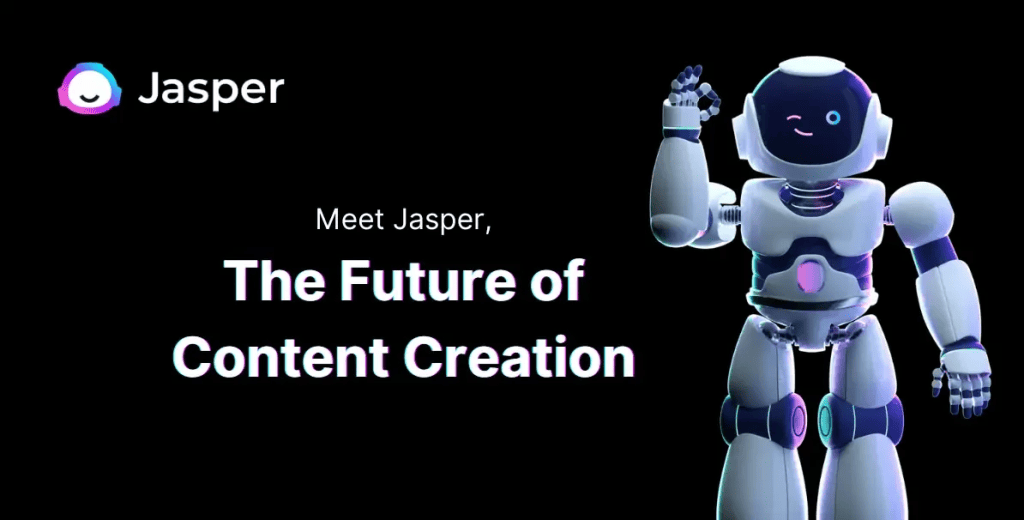
Once you have identified your target audience, and what theme you want to cover, you can utilize Jasper’s powerful AI to formulate ideas for your book. Not only is Jasper limited to this feature, but you can also tell Jasper to suggest and write interesting title ideas for your book.
To do this, you must make sure that you are using hyper-specific commands that tell Jasper exactly what to do. An example of this is by commanding Jasper to create 5 title ideas for a book about going on an adventure to find a missing treasure with a lesson that insinuates that you can achieve what you put your mind to.
Once you are able to choose from the book title ideas that Jasper has produced, you can command Jasper to create an outline for your book. It should be noted that Jasper does not have the same imaginative capabilities as a human, so before writing your book using AI, make sure that you already came up with your characters, plot, conflict, setting, and many more.
Once you have a good outline for your book, you can now utilize AI to write your book for you. Command Jasper to expand content for each section of your article up until a point where you are satisfied with it.
You can tailor the tone of your book to be fun, engaging, creative, and many more; this will be beneficial as you want to make the book sound nearly identical to that of a human writer. Also, you could tell Jasper to make the content to be as mind-blowing and intriguing as possible.
Remember, AI is just a tool that you can utilize to make the book-writing process easier, this does not mean that Jasper will just write the book on its own. It still needs tons of attending to, and specific commands that will make Jasper write the book exactly how you want it to be.
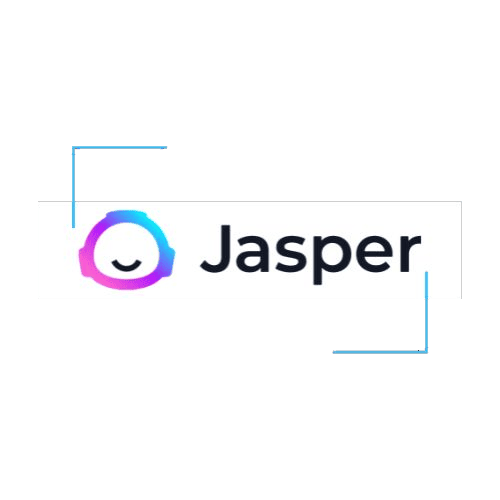
Jasper AI
Looking for an AI writing tool that can help you take your content to the next level? Look no further than Jasper. With its powerful AI, Jasper can help you write blog posts, product descriptions, social media posts, books – the possibilities are endless! Plus, at just $59 for 50,000 words, Jasper is one of the most affordable options out there. So why wait? Give Jasper a try today and see how it can help you reach your content goals!
Review and Use Grammarly to check for plagiarism and errors
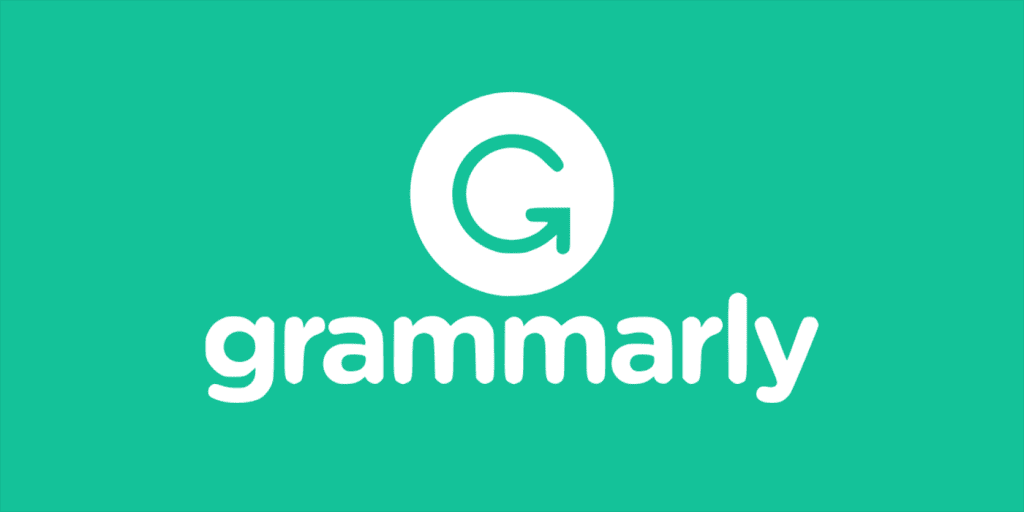
After completing your book, it is essential to review the contents for any errors or plagiarism before embarking on its publication journey. Grammarly is one of the most reliable tools that can help in this regard.
Grammarly offers comprehensive grammar, spelling and punctuation checks that help ensure flawless writing. This tool also has an advanced plagiarism detector which helps detect any potentially plagiarized content in your book. With its powerful algorithms, it can accurately scan through billions of web pages to detect duplicate content within your book. It also highlights how similar or different the text matches are to existing online content so you can make sure there’s no unintentional plagiarism present in your work.
In addition to checking for plagiarism, Grammarly also provides helpful suggestions such as alternate words and sentence structures to improve clarity and enhance readability, Grammarly has a feature that scores your content readability from 1-100, which is a great factor to consider, especially since you are writing books for children. This ensures that your book will be well-written, easy to read, and free from errors before sending it to a traditional publishing company.
Grammarly is a reliable tool that can help writers check for plagiarism and correct errors in their writing. With its comprehensive suite of features, it is the perfect companion for any writer who wants to make sure their work is as flawless as possible before submitting it for publication.
So don’t forget to use Grammarly when reviewing your book.

Grammarly
Grammarly is the best tool to aid in checking for grammatical and spelling errors. No more worries about errors that may take away from your message. It automatically changes errors, and adds in scoring for readability which can be a great help when writing childrens book, making your content free from errors, and easy to read. With Grammarly, you can have confidence that your message will be communicated in a clear and error-free manner.
Use Originality.ai free AI detection software Chrome Extension

Originality.ai is an affordable AI detection software Chrome Extension that can help writers of children’s books quickly detect unintentional plagiarism within their work, Originality AI is cheap with a cost of just $0.01 per credit, and 1 credit scans 100 words.
This extension uses advanced AI technology to check for identical or highly similar content between the users’ text and other sources on the internet. This ensures that any copied content is caught and flagged, allowing the writer to properly cite and attribute it before publishing their work.
Originality.ai offers unparalleled accuracy when detecting potential plagiarism in writing; boasting an impressive 90% accuracy rate when checked against both internal databases as well as external sources such as Google Books and Wikipedia – making it reliable enough for professional use yet simple enough for students or novice writers who require assistance in avoiding unintended plagiarism in their writing.
Originality AI works fast and immediately highlights all the plagiarized content to make the editing and revising process easier for you.

Originality AI
If you’re looking for a tool to quickly and easily check for plagiarized content, Originality AI is the perfect solution. It’s powerful engine scans the entire Google database in seconds, so you can be confident that your content is original. Plus, it’s one of the cheapest options out there, costing just $0.01 per credit. 1 credit scans 100 words, so you can be sure your content is thoroughly checked for plagiarism.
Rewrite any sections that are hit for plagiarism in Quillbot
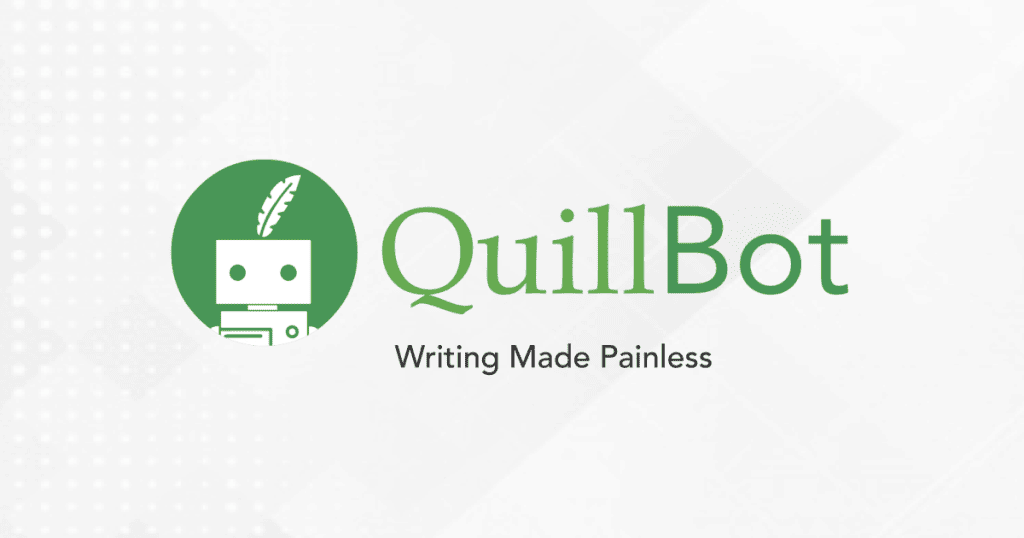
If some sections within your article are detected as plagiarized content, you can utilize yet another AI writing tool named Quillbot to save time on the editing and revising process of your book.
Quillbot is a powerful AI writing tool that can help users quickly and easily rewrite sections of text to avoid plagiarism. It does this by using advanced machine learning algorithms to analyze the input text and determine which words or phrases should be rewritten to make the output text more original. Quillbot is available as an online web-based application, but it also has extensions for Microsoft Word, Google Chrome, and Google Docs.
When using Quillbot for rewriting, users can choose from five different writing modes: standard, fluency, formal, simple, and creative. Standard rewriting mode is perfect for editing academic papers or business documents while Fluency mode is great for making articles more fluid and readable. Formal mode is best used when creating official documents while Simple mode focuses on shortening sentences and rearranging terms. Finally, Creative mode allows users to be creative with how they rewrite their texts by making more use of synonyms and other unique language structures.
No matter how complicated the original text may be, Quillbot can effectively rephrase it quickly and accurately so that it can pass any plagiarism checker with flying colours.
This makes it ideal not just for students needing to cite sources properly in their assignments but also authors wanting to create new stories without getting hit with plagiarism allegations such as how to write a children’s book.

Quillbot
Are you looking for a content paraphrasing tool that is both quick and reliable? Then you need Quillbot! This amazing software can paraphrase plagiarized content in seconds, making your content unique and Compliant with all search engine guidelines. You can even set options in Quillbot that allows the bot to paraphrase the content however you like. It starts at just $7.45 per 25 pages, and up to $49.95 for 250 pages. So why wait? Get started with Quillbot today!
AI to add illustrations for your book

Once you are satisfied with the content in your book, it’s time to add a crucial element to all children’s books, the illustrations.
Illustrations are images that will immediately capture the attention of your readers, so you must ensure that your images are interesting. If you don’t have experience editing images yourself, there are tons of AI image generators in the market that immediately creates art for you depending on your commands.
AI image generators such as Adobe Spark and DeepArt have revolutionized how we create content for children’s books. With these AI tools, you can quickly and easily generate custom images that perfectly match your story or concept. To start creating images using AI, here are some steps you can follow:
- Ask AI to describe each page in adjectives and verbs so you can describe it to an illustrator. You can do this using Jasper AI with its powerful description writing capabilities. With Jasper, you are guaranteed clear instructions that the AI image generator can use as a foundation for the art.
- Ask AI to write the descriptions again but include what person(s)/animals etc. should be in the picture. In this part, make sure to add to the commands specific characters that you want to be added to the art, whether it would be a person, animal, object, type of weather, environment, and many more.
- Once you have the descriptions for each section of your book, log into your AI image generator and input the prompts from above to create your images. The AI can automatically generate the perfect illustration for you in seconds. You can also use AI tools to produce intricate mandalas for background scenes or complex 3D objects for characters.
By simply inserting descriptive keywords into the generator, you can craft compelling illustrations that bring your characters alive on the page. Remember that the AI won’t create images themselves, ensure that your putting specific commands so that the AI can craft the images you have in mind.
Get a book template from Amazon
Once you have your book ready for self-publishing, it’s time to determine the dimensions of your book which will be a crucial part of when you are going to create the design for your book cover. To do this effectively, you can follow these steps:
- Go to Amazon KDP and input your book dimensions into the Print Cover calculator and Templates (interior Trim Size options). Include your page count.

2. Click Calculate dimensions.

3. Click download template.

Design book cover in Canva
We’ve all heard the phrase, don’t judge the book by its cover, but this is entirely false.
A book cover is the first thing that your readers will glance upon, so do your best to create a fantastic book cover design using Canva with the template provided by Amazon KDP.
To do this, you can follow these steps:
- Log in to Canva, and click on create a design.

2. Custom Size and use the dimensions from the Amazon KDP template.

3. Upscale images to fit the book pages.
4. Upload the Amazon template to your Canva template scale to fit the CTWork within the bleed outlines. And import your artwork.

5. Use Canva fonts to create the title and author credits on the cover.

6. Create the book with a blurb about the story. Be aware of fonts and do not cover the UPC block. Make the Amazon template slightly transparent to be able to work with the back cover.
Create book pages in Canva
Once you have created your book cover, and have already finished editing and formatting your content. You can now add it to Canva to create individual book pages.
You can follow these steps:
- Create a new design.
- Choose a custom size and use the dimensions suggested by Amazon KDP.
- Use one-half of your Amazon template.
- Input your text and include the images created from your AI generator.
- Put your page titles at the top of the pages.
- Make it look the way you want and aesthetically pleasing.
Exporting your book from Canva
- Go to Share.

2. Click on download.

3. Select PDF.
4. Save as PDf for pages and cover.

5. Upload to Amazon KDP.
Conclusion
Writing a memorable children’s book with the help of AI technology can be an enjoyable and rewarding experience.
By understanding how to use these powerful tools, you will have access to new possibilities for creativity that could ultimately lead to creating captivating stories that are sure to keep young readers engaged and entertained.
With these tips in mind, you should now feel more confident about how best to leverage AI when writing your next great children’s book, and become one of the best children’s book authors in the world.
Remember to have an amazing story idea, determine your target age range, design memorable characters, craft a great story structure, and finally, teach children some valuable life lessons.
So get creative, tap into your inner child, and let the power of AI take your story-telling journey where it needs to go!



